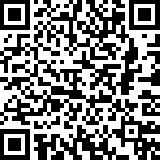Today social media applications plays an important role in our day-to-day activities as a result of the Web 2.0 revolution that took place in the Internet. It has revolutionized the lifestyle of almost all the individuals and business entities, for the majority of them spending at least few minutes with it has become an integral part of the day. The Elephanti, is a retail media ecosystem that aims to provide a platform for both individuals (Shoppers) and business entities (Merchants) to virtually interact with each other to buy and sells items on the go. It composed of a free Web based application for the Merchants and a free smart phone application (iPhone and Android) for Shoppers.
- The Merchants can sign up for a free account and be able to create a virtual storefront in few minutes and manage its routine activities via the Web based console to update their profile, add products, post discounts, etc…
- Those who are signing up as Merchants, initially selects their type of business (Single store, Chain store, Mall, Brand, Department store and Freelancer). Each type of business is modeled with an unique, customized set of features to facilitate its main line of business requirements.
- For Merchant signing up with Elephanti, the system facilitates the merchant to describe the nature of the business and its specialization areas, such as Fashion retail, Cafes, Dinning venue, Cinema, Book stores, Services, Health and Beauty, Consumer electronic, Grocery stores, Automotive, Hotel, Travel and Tourism, Entertainment venue, etc… Each category further goes into a fine level of detailed specializations.
- Shoppers only needs to download the app into their mobile phones to follow their favorite merchants, search for interesting place, items, create a shopping list, and many more. Using the app, they will be able to look at stores nearby and see what they have, write a review, add items to their shopping lists.
- Shoppers will be able to look at places nearby and see what they have by check-in to the place, this provides the shopper and the shop owner a customized set of interactive features.
- Also the Shoppers can discover Friends on the Elephanti network or sending invitations via other social media networks or via an Email and interact with each other through messaging, sharing activity updates, exchange shopping lists, uploading photo(s) to an album and tag their friends or/and places(Merchants), etc…
- Shoppers can organize list of items planning buy just by creating a shopping lists and select nearby place(Merchant) they plans to buy it.
- Rate a place and write a review and/or to comment them.
The main idea of Elephanti is to provide a platform for business owners to create a virtual storefront and invite shoppers to get to know about the items they sell and the discounts they offer, in the meantime the Shoppers are benefited by finding places nearby, items they sell and the discounts they offer and getting touch with their friends, plan their activities and many more.


